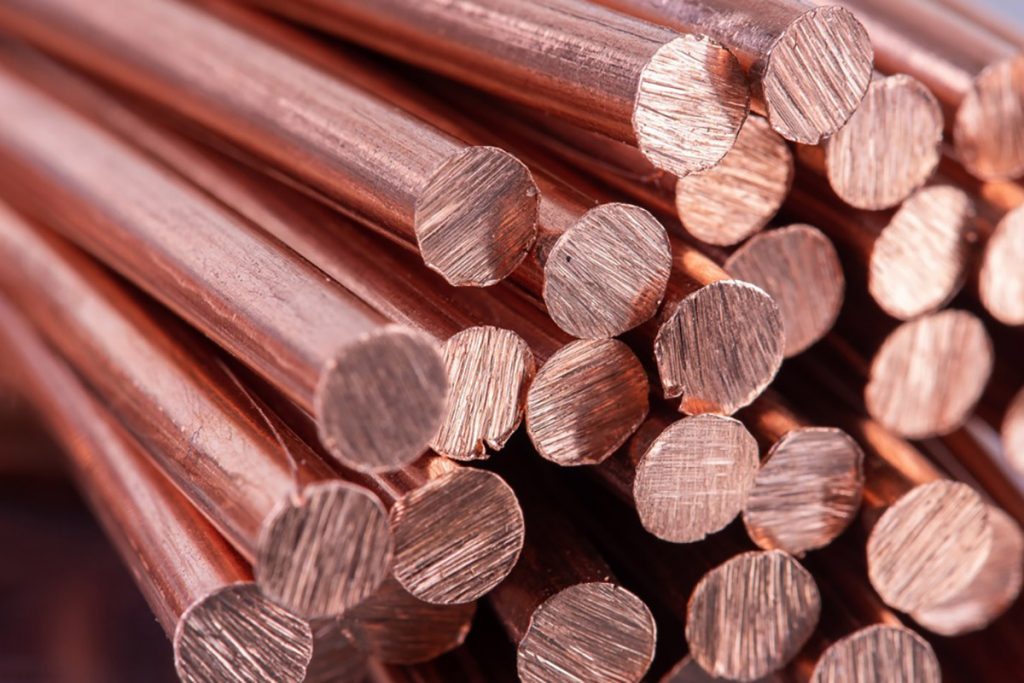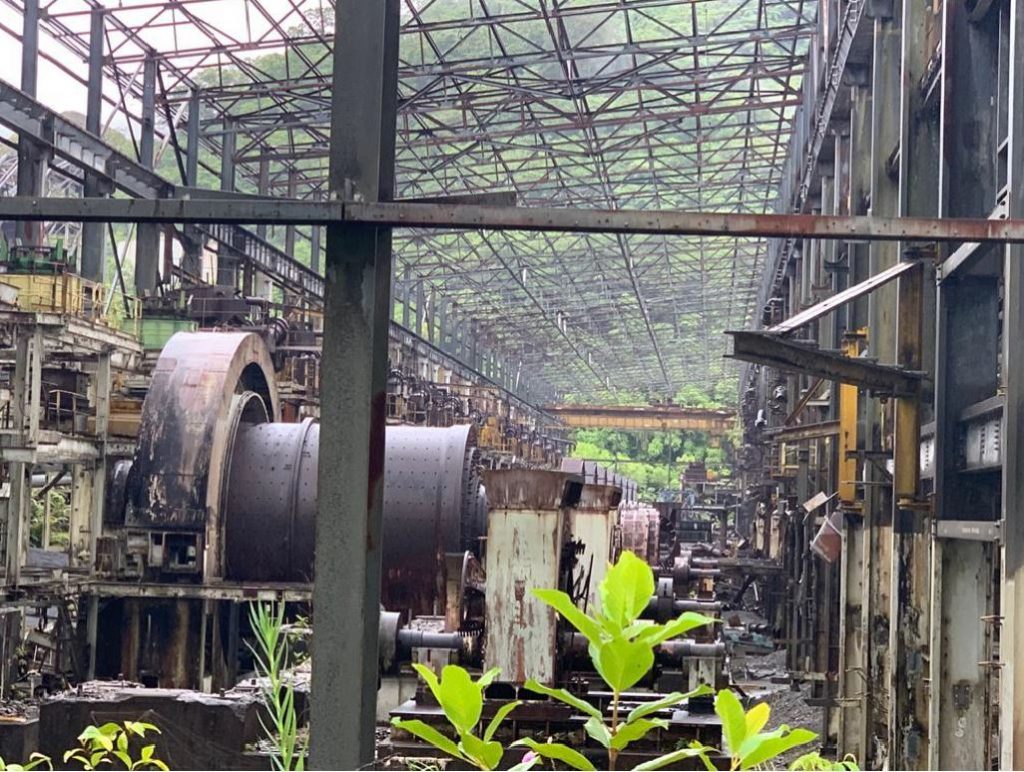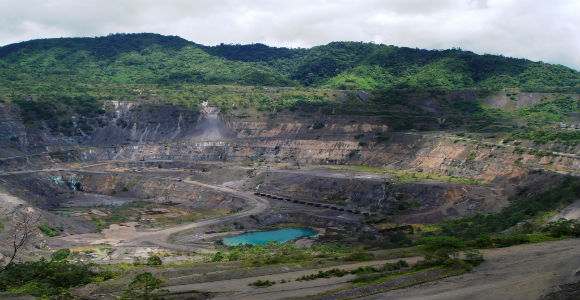Issues note compiled for BCL by Cameron Hill an industry communications specialist and former journalist of more than 20 years’ experience.
Download report here Research Note – Copper Prospects.
Introduction
Off the back of constrained supply and rising demand, many analysts are predicting a sustained period of price growth for copper through this decade and beyond.
At the end of April 2021, the red metal broke US$10,000 per tonne for the first time since 2011 and by early May 2021 had reached a new all-time high of US$10,724 on the London Metal Exchange. Over the past 12 months copper prices had more than doubled as parts of the global economy commence recovery from the Coronavirus pandemic.
Despite this meteoric rise there could still be some way to run based on projections around demand growth. Goldman Sachs for example captured attention with a recent research note titled: Copper is the new oil when it predicted prices could rise to US$15,000 per tonne by 2025.[i] Others believe this mark could prove conservative post-2025 given concerns over structural shortfalls in supply due to insufficient new mine projects coming online.
Copper is behind only iron ore and aluminum as the world’s most used metal[ii] with global annual consumption currently standing at around 24.4 million metric tonnes.[iii] A report by Roskill forecasts that this figure could almost double to 43 million tonnes by 2035, based on expected population and GDP growth, urbanisation and electricity demand.[iv] Not surprisingly China and India will be among the world’s key demand drivers.
Paris climate targets
Goldman Sachs specifically highlights the critical role that copper will play in achieving Paris carbon emissions reduction targets which aim to limit global warming to below two degrees Celsius compared to pre-industrial levels.[/vc_column_text][/vc_column][/vc_row][vc_row][vc_column][vc_column_text][v][/vc_column_text][/vc_column][/vc_row][vc_row][vc_column][vc_column_text]Copper is a central component in wind, solar and geothermal systems as well as the batteries used to store renewable energy. It is also integral to the production of electric vehicles (EV) which are expected to surge in demand.
As the global economy undergoes COVID-19 recovery, heavy coal consumption has intensified in Asia and in particular China placing new emphasis on the importance of reducing carbon emissions. The International Energy Agency has warned that global emissions from energy use are on track to spike by 1.5 billion tonnes in 2021.[vi] This would amount to the second largest annual increase in energy-related emissions in history and outweigh rapid growth in renewable energy sources.
Against this backdrop several developed economies, including the United States, Canada and Japan are strengthening their 2030 emissions reduction targets and looking to support new waves of investment in clean energy projects. These are significantly more copper intensive than fossil fuel-based infrastructure.[vii]
Copper in clean energy
According to Bernstein Research global copper production would need to rise by between three and six per cent annually by 2030 if countries are to meet their Paris targets.[viii]
Where a conventional combustion engine car for instance contains around 10-22 kilograms of copper, an electric car typically requires more than 80 kilograms, while an electric bus contains more than 360 kilograms.[ix] In 2019 there were an estimated 7.2 million hybrid and electric cars globally from virtually zero in 2010.[x] In 2020, annual EV sales were estimated at 3.2 million[xi] and according to Deloitte this figure could top 11.2 million in 2025 and 31.1 million by 2030.[xii]
 Research commissioned by the International Copper Association predicts that future solar and wind energy projects will increase copper demand by 813,000 tonnes annually by 2027; a 56 per cent increase on 2018 levels.[xiii] In the Asia Pacific alone, copper usage in solar energy projects is predicted to grow to 378,000 tonnes by 2027; a 95 per cent increase on 2018.[xiv]
Research commissioned by the International Copper Association predicts that future solar and wind energy projects will increase copper demand by 813,000 tonnes annually by 2027; a 56 per cent increase on 2018 levels.[xiii] In the Asia Pacific alone, copper usage in solar energy projects is predicted to grow to 378,000 tonnes by 2027; a 95 per cent increase on 2018.[xiv]
In a 2019 report Wood Mackenzie specifically noted that wind technology is the most copper intensive form of power generation and will consume the largest amount of copper over the next 10 years in the renewable energy sector. [xv]
A single three MW wind turbine for example can contain up to 4.7 tonnes of copper, while solar power systems can use approximately 5.5 tonnes of copper per MW.[xvi] Between 2018 and 2028 it estimated that more than 650 GW (650,000 MW) of new onshore and 130 GW (130,000 MW) of offshore wind capacity will be installed globally. This will consume in excess of 5.5 million tonnes of copper.[xvii]
While in the United States alone it is projected that new solar installations through to 2027 will require 1.9 billion pounds of copper[xviii](860 million kilograms). The US has unveiled a $174 billion plan to spur the development and take-up of EVs and President Joe Biden has pledged to roll out 500,000 new EV charging stations by 2030.[xix]
A new “clean electricity standard” will also force utilities away from carbon emitting sources by 2035 while electrical grid upgrades are proposed to carry increased levels of renewable energy. This would include the construction of higher voltage transmission lines across the United States potentially involving tens-of-thousands-of-kilometres of copper wire.
A long-term supply gap?

In its report, Goldman Sachs says meeting the Paris climate targets and supporting the broader transition away from fossil fuels could result in a long-term supply gap in global copper supply of 8.2 million tonnes by 2030, the highest on record and twice the size of the gap that triggered the bull market in copper in the early 2000s.[xx]
EV manufacturer Tesla has likewise warned of upcoming supply shortages in metal elements used to make batteries, namely copper, nickel, lithium and cobalt and that prices could increase exponentially as a consequence of future supply constraints.[xxi]
CRU Group suggests the global copper industry will need to spend upwards of $100 billion to close what could be an annual supply deficit of 4.7 million tonnes by 2030 as the clean energy and transport sectors take off.[xxii]
If hypothetically no new copper mines get constructed in the near term this shortfall could reach 10 million tonnes annually, according to commodities trader Trafigura Group.[xxiii] Closing this gap would require building the equivalent of eight projects the size of BHP’s Escondida copper mine in Chile, the world’s largest.[xxiv] In 2020, Escondida produced 1.18 million tonnes of copper.[xxv]
Globally, more than 200 copper mines are expected to run out of ore before 2035, with not enough new projects in the pipeline to take their place.[xxvi] Expansion of existing mines are expected to ease copper deficits through to 2025, but Bloomberg Intelligence warns that increasing technical complexity and approval delays could lead to a dearth of shovel-ready projects from now to 2030.[xxvii]
According to the International Copper Alliance, around 35 per cent (8.5 million tonnes) of annual global copper demand is met from recycling. The current global end-of-life recycling rate for copper is around 40 per cent. Even if recycling rates were to approach 100 per cent sometime in the future, this would still be insufficient to meet growing demand for clean energy technologies.[xxviii]
While large volumes of recycled copper are used globally in products such as pipes, fittings and sheets, pure, uncontaminated copper is most critical in intricate electrical applications. The long service life of copper products and difficulty of retrieval also limits their availability for recycling.
Known resources
Of the known copper resources that are yet to be extracted around 65 per cent are found in just five countries, Chile, Peru, Australia, Mexico and the United States.[xxix] Significant deposits are also located in other regions such as Indonesia, Poland, the Philippines, Canada, Russia, Pakistan parts of Africa and Papua New Guinea.
PNG’s Ok Tedi mine has produced over 5.01 million tonnes of copper since 1984[xxx] and like projects in other part of the world has seen production disrupted due to COVID-19. Ok Tedi will however continue to play its part in meeting copper demand this decade with mine life recently extended through to 2029.[xxxi]
Also in PNG, PanAust’s Freida River project which is in pre-development is estimated to contain 12 million tonnes of copper[xxxii] and Newcrest/Harmony’s Wafi-Golpu tenements are thought to host one of the highest-grade porphyry copper systems in the South East.[xxxiii]
Historically, when last in operation, the Panguna Mine in Bougainville which was operated by Bougainville Copper Limited (BCL) with Rio Tinto the major shareholder, was the world’s largest open cut copper and gold mine. Between 1972 and 1989 when production was halted by militant activity, the mine had produced concentrate containing three million tonnes of copper, 306 tonnes of gold and 784 tonnes of silver.[xxxiv]

Image: Panguna Mine
Based on the latest resource statements around 5.3 million tonnes of copper remain at Panguna as well as 19.3 million ounces (547 tonnes) of gold.[xxxv] At current commodity prices the value of this resource would be in the order of $US90 billion.
According to Bloomberg, average development time for a new copper project from first discovery to production has increased by four years from previous cycles to almost 14 years.[xxxvi] Twenty years is not unusual.
Due to the long lead time and high capital cost associated with the exploration and development of new greenfield mines, companies continue to significantly invest in maximising the gains from their existing projects.
In 2015 the world’s largest copper miner Codelco committed to a US$25 billion, five-year investment plan for mine expansion to simply maintain output with no expectation of significant production gain.[xxxvii]
In many jurisdictions the challenges associated with developing new projects have also become more complex, with heightened social and environmental awareness and expectations not just within host countries but also among company shareholders.
The international Copper Alliance says the global copper industry is responding strongly to these dynamics with its members investing around US$20 billion annually in sustainable practices in areas such as environmental protection and mine safety.[xxxviii]
New incentive for development
One analyst recently said current prices were a boon for copper miners who are making at least two dollars for every dollar spent on getting copper out of the ground.[xxxix] This rings true if it is assumed the marginal cost of many mines is around US$5.50 per kilogram with current copper prices consistently above US$9 per kilogram.
The prospects of a sustained period of buoyant pricing underwritten by growing global demand perhaps provides a new level of incentive for the development of copper projects once considered marginal at best. The presence of valuable by-products such as gold, silver, molybdenum and cobalt can help further bolster project economics.[xl]
For the shareholders of copper-related companies the recent price rises have helped deliver notable growth in share value. A cursory look at the ASX for example reveals that companies such as Oz Minerals, Sandfire Resources, Aeris Resources and Copper Mountain have experienced exceptional share price growth over the past 12 months.
Major diversified miners with significant copper operations such as BHP and Rio Tinto have also performed strongly. The BCL share price itself has more than doubled during this period to around AUD 60 cents as the market considers the unrealised potential of the Panguna mine and progressive political developments in Bougainville.
In Bougainville overwhelming voter support for independence in the historic 2019 referendum and the election of new president in Ishmael Toroama has seen a renewed focus on growing Bougainville’s economy. While mining will be a key area of consideration the president may be understandably cautious about redeveloping Panguna.
Many observers however believe that unlocking, in a sustainable way, Panguna’s remaining copper and gold resources is necessary if Bougainville is to ever achieve economic self-reliance. It has been previously estimated that the largescale redevelopment of Panguna would cost in the order of US$6 billion. At a processing rate of 60 million tonnes per annum the mine could operate for at least 24 years. It would employ an estimated 2,400 people and deliver significant tax revenues and royalties to government as well as payments to landowners.
A project of this scale would also support business development in Bougainville both directly and indirectly across a range of sectors with new opportunities in the supply of goods, skills and services.
In 2019, BCL undertook a review of a 2012 Order of Magnitude study to update costs and assess additional project restart options. The review outcomes show that there is an economic case to initially develop a smaller, high grade operation with a lower upfront capital cost. Once the operation reaches stable nameplate production, an expansion option could be undertaken to further increase production capacity and annual cashflow.
The review found that a staged redevelopment approach – compared to a single, large through-put development – is a potentially viable option.[xli] The redevelopment of the mine, depending on the scenario, would take seven to 10 years, compared to the almost 14-year average of a new greenfield project.
As the rate of global copper consumption increases in the years ahead, in no small part driven by the clean energy revolution, beyond the five biggest copper producing nations, there are also projects and opportunities in the likes of PNG that can bolster global supply.
If for example, the redevelopment of Panguna was to start within the next 12 months, it is feasible that production could come online before the end of this decade. New projects such as this would contribute to closing the supply gap that Goldman Sachs for one believes could reach 8.2 million tonnes by 2030.
NOTES
[i] https://www.mining.com/copper-price-scales-9000-after-goldman-calls-it-the-new-oil/
[ii] https://www.usgs.gov/centers/nmic/copper-statistics-and-information
[iii] https://www.statista.com/topics/1409/copper/
[iv] https://roskill.com/market-report/copper/
[/vc_column_text][/vc_column][/vc_row][vc_row][vc_column][vc_column_text][v][/vc_column_text][/vc_column][/vc_row][vc_row][vc_column][vc_column_text] https://unfccc.int/process-and-meetings/the-paris-agreement/the-paris-agreement
[vi] https://edition.cnn.com/2021/04/20/business/iea-carbon-emissions-report/index.html
[vii] https://www.spglobal.com/platts/zh/market-insights/latest-news/metals/011821-copper-price-to-rise-in-2021-analysts
[viii] https://www.teck.com/news/connect/issue/volume-26,-2019/table-of-contents/connecting-the-dots
[ix] https://www.mining-technology.com/comment/electric-vehicle-revolution-drive-copper-demand/
[x] https://www.iea.org/fuels-and-technologies/electric-vehicles
[xi] https://www.ev-volumes.com/
[xii] https://www2.deloitte.com/us/en/insights/focus/future-of-mobility/electric-vehicle-trends-2030.html
[xiii] https://copperalliance.org/trends-and-innovations/chinaasia-market-development/
[xiv] https://copperalliance.org/trends-and-innovations/chinaasia-market-development/
[xv] https://www.woodmac.com/press-releases/global-wind-turbine-fleet-to-consume-over-5.5mt-of-copper-by-2028/
[xvi] https://www.copper.org/environment/sustainable-energy/renewables/
[xvii] https://www.woodmac.com/press-releases/global-wind-turbine-fleet-to-consume-over-5.5mt-of-copper-by-2028/
[xviii] https://www.copper.org/environment/sustainable-energy/renewables/
[xix] https://www.cnbc.com/2021/03/31/us-ev-charging-system-a-priority-under-bidens-2-trillion-infrastructure-plan.html
[xx] https://www.northernminer.com/news/goldman-sachs-calls-copper-the-new-oil/1003830196/#:~:text=In%20a%20new%20report%20on,by%202030%2C%20the%20%E2%80%9Chighest%20on
[xxi] https://smallcaps.com.au/tesla-warns-upcoming-global-shortages-battery-minerals/
[xxii] https://www.mining.com/web/the-world-will-need-10-million-tonnes-more-copper-to-meet-demand/
[xxiii] https://www.bloomberg.com/news/articles/2021-03-19/the-world-will-need-10-million-tons-more-copper-to-meet-demand
[xxiv] https://copper.com.au/news/commodity/1om-more-tonnes-of-copper-in-a-decade/
[xxv] https://www.bhp.com/our-businesses/minerals-americas/escondida/
[xxvi] https://www.mining.com/web/copper-the-most-critical-metal/
[xxvii] https://www.bnnbloomberg.ca/the-world-will-need-10-million-tons-more-copper-to-meet-demand-1.1579571#:~:text=The%20World%20Will%20Need%2010%20Million%20Tons%20More%20Copper%20to%20Meet%20Demand,-James%20Attwood%2C%20Bloomberg&text=(Bloomberg)%20%2D%2D%20Within%20a%20decade,metal%20for%20global%20economies%3A%20copper.
[xxviii] https://sustainablecopper.org/circular-copper/
[xxix] https://www.usgs.gov/faqs/how-much-copper-has-been-found-world?qt-news_science_products=0#qt-news_science_products
[xxx] https://oktedi.com/who-we-are/about-us-overview/
[xxxi] https://www.australianmining.com.au/news/ok-tedi-mine-life-extended-by-three-years/#:~:text=The%20Ok%20Tedi%20copper%2C%20gold%20and%20silver%20mine,into%20the%20mine%20during%20the%20past%20few%20years.
[xxxii] https://friedariver.com/wp-content/uploads/2019/09/FRCGP_FINAL.mp4
[xxxiii] https://www.newcrest.com/index.php/our-assets/wafi-golpu
[xxxiv] https://www.bcl.com.pg/history-panguna-mine/
[xxxv] https://www.bcl.com.pg/wp-content/uploads/2021/06/BCL-2020-Resource-Statement.pdf
[xxxvi] https://www.bloomberg.com/news/articles/2021-03-19/the-world-will-need-10-million-tons-more-copper-to-meet-demand
[xxxvii] https://www.mining.com/codelco-spending-25-billion-just-keep-output-steady/
[xxxviii] https://sustainablecopper.org/meeting-future-copper-demand/
[xxxix] https://www.mining.com/copper-extends-rally-to-10000-for-the-first-time-since-2011/
[xl] https://www.spglobal.com/marketintelligence/en/news-insights/latest-news-headlines/copper-supply-faces-struggle-to-keep-up-with-growing-demand-60471925
[xli] https://www.bcl.com.pg/wp-content/uploads/2020/06/Chairmans-speech-2020-AGM-Powerpoint-Web.pdf
[/vc_column_text][/vc_column][/vc_row]


